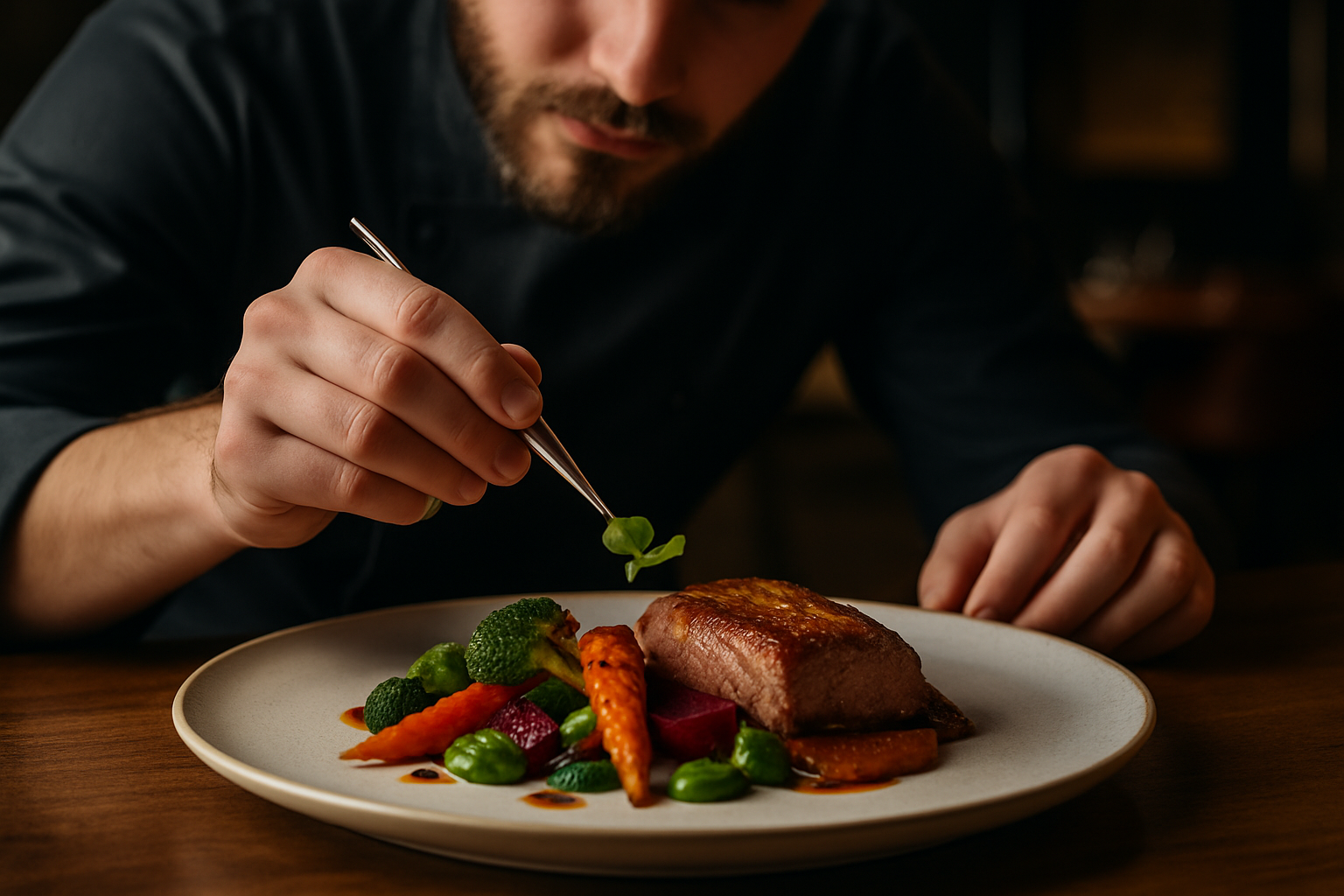Culinary Canvas: Edible Art Transforming Plates into Masterpieces
Imagine a world where your dinner plate becomes a canvas, and your meal transforms into a breathtaking work of art. Welcome to the mesmerizing realm of edible art, where culinary creativity knows no bounds and every dish tells a story. This innovative approach to food presentation is revolutionizing the dining experience, blending gastronomy with visual artistry to create unforgettable culinary masterpieces.

Techniques and Tools of the Trade
Creating edible art requires a unique set of skills and tools that blend traditional culinary techniques with artistic methods. Chefs are increasingly using paintbrushes, tweezers, and even syringes to apply sauces and garnishes with precision. Food-safe paints and edible flowers are becoming staples in professional kitchens, allowing for vibrant color palettes on the plate. Advanced techniques like spherification and foam creation add texture and dimension to dishes, creating visual interest and unexpected flavors. The use of liquid nitrogen for instant freezing and smoke guns for dramatic presentation effects are also gaining popularity, turning dining rooms into theatrical stages for culinary performances.
The Psychology of Plating
The visual appeal of a dish can significantly influence our perception of taste and overall enjoyment of a meal. This phenomenon, known as “visual flavor,” is at the heart of edible art. Studies have shown that beautifully presented food is perceived as more flavorful and satisfying, even when the ingredients remain the same. Chefs are now leveraging this psychological aspect by carefully considering color combinations, geometric patterns, and negative space in their plating designs. The goal is to create an emotional connection with the diner, evoking feelings of wonder, nostalgia, or even playfulness through visual storytelling on the plate.
Sustainable and Edible Canvases
As the edible art movement grows, so does the emphasis on sustainability. Innovative chefs are exploring eco-friendly alternatives to traditional plating materials, using edible “canvases” made from ingredients like rice paper, seaweed, or dehydrated vegetable sheets. These not only provide a unique backdrop for the dish but also reduce waste and add an extra layer of flavor to the meal. Some restaurants are taking it a step further by creating entire edible landscapes, where diners can literally eat their way through a miniature garden or forest scene, blurring the lines between food and art installation.
From Fine Dining to Home Kitchens
While edible art has its roots in high-end restaurants, the trend is increasingly making its way into home kitchens. Social media and online tutorials have democratized these techniques, inspiring home cooks to experiment with artistic plating. Simple tools like squeeze bottles for sauce designs or cookie cutters for shaping ingredients can help amateur chefs create Instagram-worthy dishes. The rise of meal kit services offering “plating guides” alongside recipes is another indicator of the growing interest in edible art among home cooks, proving that creating beautiful, artistic meals is no longer limited to professional chefs.
Helpful Tips for Creating Edible Art
• Start with a clean, white plate as your canvas for maximum visual impact
• Use contrasting colors and textures to create depth and interest
• Embrace negative space – sometimes less is more in artistic plating
• Invest in quality tweezers and small offset spatulas for precise placement
• Experiment with edible flowers and microgreens for delicate, colorful accents
• Practice basic garnishing techniques like quenelling and swooshing sauces
• Consider the height and layering of elements to create a three-dimensional effect
• Don’t forget about the importance of portion sizes in your artistic composition
In conclusion, edible art is revolutionizing the way we experience food, turning meals into immersive, multi-sensory experiences. As this trend continues to evolve, we can expect to see even more innovative techniques and presentations that challenge our perceptions of what food can be. Whether in a fine dining restaurant or your own kitchen, embracing the principles of edible art can transform everyday meals into extraordinary culinary adventures, proving that sometimes, playing with your food is not just allowed – it’s encouraged.





